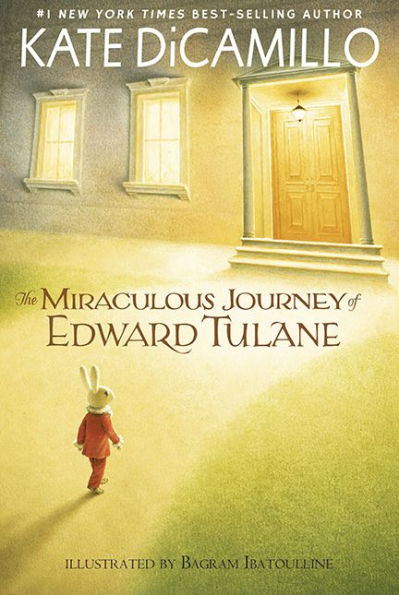What’s better than vacation? Reading while on vacation. But if you’re traveling with a carload of kids, you might not get much time to sink into an adult novel of your own, what with all the Cheetos flying from the back, little feet incessantly kicking your seat, and sibling squabbles that unfold in spite of […]

The Miraculous Journey of Edward Tulane

The Miraculous Journey of Edward Tulane
Related collections and offers

Product Details
| ISBN-13: | 9780763649425 |
|---|---|
| Publisher: | Candlewick Press |
| Publication date: | 09/08/2009 |
| Sold by: | Barnes & Noble |
| Format: | eBook |
| Sales rank: | 42,609 |
| Lexile: | 700L (what's this?) |
| File size: | 13 MB |
| Note: | This product may take a few minutes to download. |
| Age Range: | 9 - 12 Years |
About the Author
Customer Reviews
Explore More Items
In this novella from the world of Erin Hunter's #1 nationally bestselling Warriors series, discover the sinister past of one of the most treacherous cats in the Dark Forest.
Long before she
When Hollyleaf disappeared in the tunnels by the Lake, ThunderClan believed she was gone forever. But her adventure was only beginning. . . .
Lost and lonely, Hollyleaf soon meets a mysterious cat
The fourth book in Erin Hunter’s #1 nationally bestselling Warriors series
Join the legion of fans who have made Erin Hunter’s Warriors series a bestselling phenomenon. More thrilling
A National Book Award finalist by Newbery Medalist Kate DiCamillo.
Walking through the misty Florida woods one morning, twelve-year-old Rob Horton is stunned to encounter a tiger—a real-life,
“If James Marshall's George and Martha were not hippos and were both girls, they would be much like best friends Bink and Gollie. . . . More, please!” — Kirkus Reviews (starred
What will it take for a cynical older sister to realize she’s a born accordion player — with music in her heart?
Eugenia Lincoln is a practical person with no time for gee-gaws,
Drôle de concours de circonstances! Un cynique rencontre un improbable superhéros dans ce nouveau roman de Kate DiCamillo. Cela commence, comme dans les meilleures histoires de
Pierre-Auguste Duchêne sait que le diseur de bonne aventure dit vrai : sa sœur est bel et bien en vie et il lui suffit du suivre l'éléphant pour la retrouver.
Metaphor alert! An ode to a certain pig kicks off one wild school day in Kate DiCamillo’s latest stop on Deckawoo Drive.
Stella Endicott loves her teacher, Miss Liliana, and she is thrilled
For fans of Mercy Watson, old and new, comes a joyful crescendo of favorite characters in a picture-book celebration of the quiet miracles the holidays bring. Mercy ornament included!
Stella Endicott
Every friendship faces challenges. Orris and Timble are back in a poignant and evocatively illustrated tale of trust from a two-time Newbery Medalist.
Orris the rat and Timble the owl are unlikely
Epic adventures. Fierce warrior cats. A thrilling fantasy world. It all begins here.
Read the book that began a phenomenon—and join the legion of fans who have made Erin Hunter’s Warriors
The sixth book in Erin Hunter’s #1 nationally bestselling Warriors series
Join the legion of fans who have made Erin Hunter’s Warriors series a bestselling phenomenon. More thrilling
Erin Hunter’s #1 nationally bestselling Warriors series continues with the third book in the New Prophecy series!
The third book in this second series, Warriors: The New Prophecy #3:
